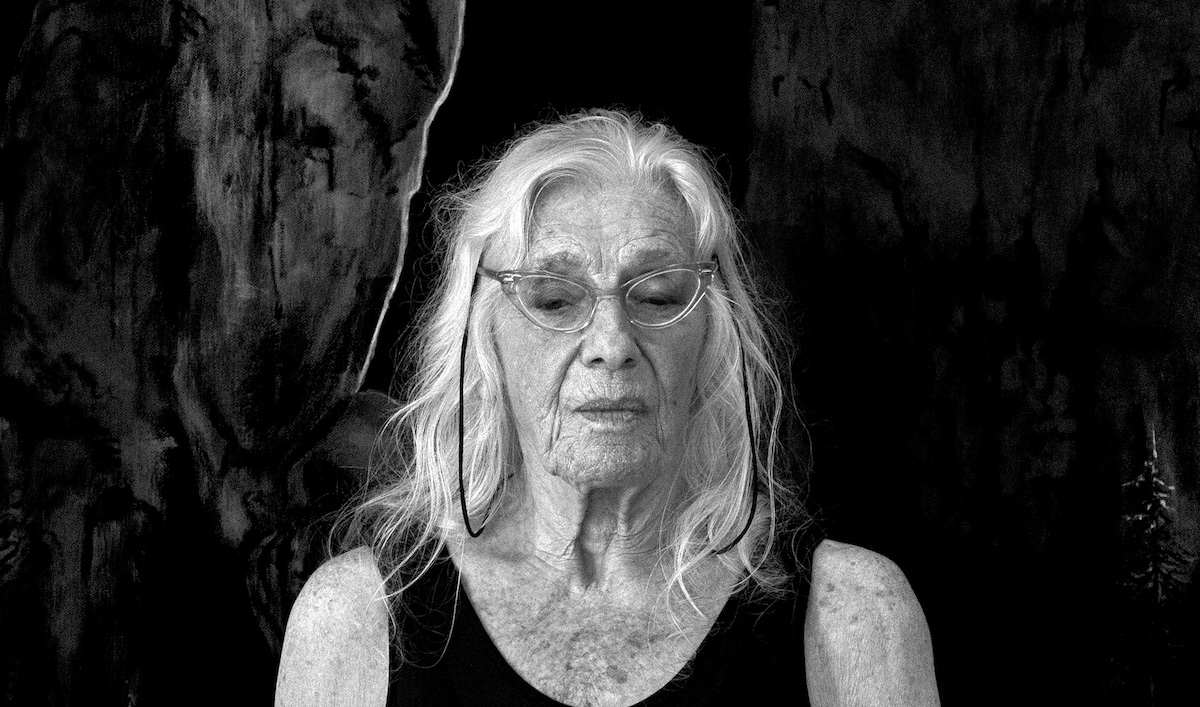The painter Jo Baer, whose artistic path journeyed from hard-edged minimalism to self-described “radical figuration,” died yesterday, January 21, in Amsterdam at the age of 95. The news of her death was announced by Pace Gallery, which has represented the artist since 2019.
Baer, who initially rose to prominence during the burgeoning male-dominated Minimalism movement of the 1960s and ’70s before later rejecting the art form in favor of more experimental and figurative compositions, is widely recognized for a pioneering painting practice that continually transformed over the course of a six-decade career that never slowed.

Born Josephine Gail Kleinberg on August 7, 1929, in Seattle, Washington, the artist began pursuing art at a young age at the encouragement of her mother, who enrolled her in art classes when she was 11 years old in the hopes that she would become a medical illustrator. As a biology student at the University of Washington, Baer enrolled in introductory painting and drawing courses before later moving to New York, where she studied perceptual psychology and philosophy at the New School for Social Research.
Her artistic career began when she moved to Los Angeles in 1953, where she created — and then mostly destroyed — paintings in the mode of Abstract Expressionism. In 1960, upon her return to New York, she pivoted to a new style when she became involved in the city’s growing Minimalism movement. It was at this time that she began exploring non-objective, hard-edged painting, drawing praise for her strikingly reductive canvases at a time when attention was largely focused on the output of male sculptors.

Still, despite being an outlier both for her gender and medium of expression, her early works, which predominantly comprised stark white and gray paintings bounded by black edges and were typically exhibited low to the ground or as diptychs, were presented alongside other leading Minimalist figures including Kenneth Noland, Robert Mangold, Frank Stella, Dan Flavin, and Sol LeWitt throughout the ’60s. She was included in landmark group shows such as Kaymar Gallery’s Eleven Artists (1964), the Guggenheim Museum’s Systemic Painting (1966), and Dwan Gallery’s 10 (1966). In 1966, New York’s Fischbach Gallery mounted her first solo exhibition, which was followed by a mid-career retrospective at the Whitney Museum of American Art less than a decade later in 1975.
Famously unafraid and sharp-tongued, Baer also drew attention early on in her career for her theoretical writings, which consisted of letters to editors, statements, and articles that at times ostracized her from her peers for her unswerving defense of painting, challenging assertions by artists like Donald Judd and Robert Morris who insisted that the medium had been rendered obsolete.

In the 1970s, following her Whitney retrospective, Baer moved to Europe, where she ultimately settled in Amsterdam after living in Ireland and London. It was during this relocation that she abandoned abstraction for a new visual language, which she described as “radical figuration” in a famous 1983 letter to Art in America where she declared that she was “no longer an abstract artist.” This aesthetic pivot saw her create images that drew from prehistoric cave motifs, feminine archetypal symbols, geography, and astronomical forms, grounding her practice in ancient history, mythology, and figurative expression. In more recent decades, she incorporated digital collages that were subsequently printed out and drawn on, as shown in Jo Baer: Towards the Land of the Giants at the Camden Arts Centre in London in 2015.
“I wanted more subject matter and more meaning,” Baer later explained about the transformation in her work. “There was an awful lot going on in the world, and I didn’t just want to sit there and draw straight lines.”
Baer’s work has been exhibited at venues internationally and is currently on view in the Museum of Modern Art’s group exhibition Vital Signs: Artists and the Body, which runs through February 22. Her paintings can be found in the collections of public institutions including the Guggenheim Museum in New York; the Art Institute of Chicago; the Los Angeles County Museum of Art; the Stedelijk Museum Amsterdam; the Louisiana Museum of Modern Art in Denmark, and others.


